FestPAC is Here: Notes on the Festival of Pacific Arts and Culture.
Where do we go from here? What do we do with our desolation? How obscene is it that communities with the smallest carbon footprint—like low-lying islands and atolls in the middle of the Pacific Ocean—are paying the steepest price for a crisis we had almost no hand in creating? How do warm-blooded longings for equity and justice figure into global discourse dominated by the cold language of mitigation and adaptation? How do we stay sane as well as sentient?
– Julian Aguon, The Properties of Perpetual Light

The WESTAF delegation with a troupe of traditional dancers in the Commonwealth of the Northern Marianas Islands.
It’s common to have a romanticized view of the Pacific, developed over decades by movies, television and advertising. An expanse of tropical islands with white sandy beaches, swaying coconut trees, and dreamy sunsets. This image is often sold as paradise for those who can afford it. Our perceptions are often shaped by fragmented images from media and advertisements. Is it the bustling tourism of Waikiki, the exclusive resorts of Bora Bora, or the historic site of Rapa Nui with its iconic statues?
Understanding Oceania’s complexity — over 10,000 diverse island communities across 3.2 million square miles — requires more than these mythologized images. The regions of Melanesia, Micronesia, and Polynesia, along with the subregion of Australia and New Zealand, are bound closely together with the rest of humanity by shared environmental and geopolitical challenges.
Across history, the Pacific region has faced relentless colonization and exploitation. The indigenous people of Guam endured forced labor camps and executions during World War II, while the Marshall Islands and French Polynesia were subjected to nuclear testing. Islands like Nauru have been strip-mined for their resources, and the entire region faces severe threats from climate change despite contributing less than 1% of global greenhouse gas emissions.
Yet, despite these challenges, Pacific cultures endure and thrive. The Festival of Pacific Arts and Culture (FestPAC), held every four years, is a testament to this resilience. Scheduled this June 6 – 16, in Honolulu, Hawai‘i, FestPAC will bring together over 2,100 delegates and thousands of visitors from 26 Pacific nations and jurisdictions to celebrate and share their cultural heritage.

The WESTAF delegation and their hosts from the American Samoa Council on Arts, Culture and Humanities.
There will be representatives from continents as large as Australia and as small as Polynesia’s Pitcairn Islands (population 50), fielding two FestPAC delegates. Together in Hawai‘i, indigenous Aborigine, Maaori, Samoan, CHamorro and Carolinian people will be demonstrating and sharing ancient traditions of navigation, sailmaking, canoe building, carving, weaving, tattooing, fashion design, music, and ceremonial dancing that define ancient identities formed in nature over generations through spirits and rituals. They will be reuniting a Pacific diaspora that, while geographically remote, culturally diverse, and scattered across a restless ocean, are very much connected by a shared destiny.
This FestPAC installment, themed Ho‘oulu Lāhui: Regenerating Oceania, has been gestating for eight years, after the global COVID pandemic stalled its planned 2020 debut. The SPC, or the Pacific Community, a regional development organization owned and governed by its participating nations and jurisdictions, has served as the custodian of FestPAC since its inception. FestPAC is managed by the Council of Pacific Arts and Culture (CPAC) alongside a Hawai‘i organizational committee and production team charged with the logistics and operations necessary for a breathtakingly ambitious convening, including housing, infrastructure, visa procurement and the biosecurity mitigation of invasive species hiding in the plants and animal products shipped to its shores for use in traditional practices. Epic in scope and fabled by cultural practitioners, FestPAC is a colossal undertaking, and it’s right around the corner.

Renowned Samoan artist Reggie Meredith Fitiao shows her siapo, or tapa cloth, accompanied by her husband Su’a Ulisone Fitiao, a traditional Samoan tattoo artist.
It is into this labyrinthine confluence of Pacific history and heritage that the Western States Arts Federation (WESTAF) seeks to be a trusted cultural ally, furthering our commitment to a continued focus on equitable grantmaking and diverse arts ecosystems throughout the western region. In June 2022, WESTAF announced an unprecedented partnership with the three U.S. jurisdictions (colonially still referred to as “territories”) of Guam (the last most recent hosts of FestPAC in 2016), the Commonwealth of the Northern Mariana Islands (CNMI) and American Samoa, long underrepresented as a region within the U.S. arts sector and in conversations surrounding arts advocacy.
While supported by the National Endowment for the Arts (NEA) and the National Endowment for the Humanities (NEH), these jurisdictions, and especially their indigenous populations of CHamorro, Carolinian and Samoan people are often overlooked and forgotten by the U.S. cultural sector, even though they are U.S. citizens. In truth that’s not hard to explain. Traveling to these islands is an expensive, rigorous exercise. When traveling to Guam from the U.S. mainland, it’s not uncommon to fly from a major airport west to Japan, then south four hours to Guam. There are only two flights a week – Tuesday and Thursday evenings – to and from Honolulu and American Samoa’s capital Pago Pago. CNMI is a short flight from Guam, and both jurisdictions cater to mostly Asian holidaymakers, whereas American Samoa has just a few modest hotels.

A woodcarver at work in American Samoa.
WESTAF in this new partnership seeks to create avenues and opportunities to include the U.S. Pacific Jurisdictions in the programs, services, and activities that WESTAF has to offer, and to assure them a seat at the table in conversations shaping cultural advocacy and public policy. We believe that casual exclusion is exclusion in its most common form. Indeed, inclusion is central to how we see ourselves as an organization. In our partnership with the Jurisdictions, we are committed to expanding networks for artists and arts organizations of the Pacific territories and offer resources to some of the most remote communities in the United States. We seek to holistically develop programs, creating a partnership that includes Pacific values, culture, and priorities. The arts agency leaders of the 13 western states that had previously defined our region warmly embraced this development, without hesitation. Furthering our commitment to inclusion, WESTAF now serves a region stretching from the Arctic Coast to the Desert Southwest, and from the Great Plains to the Pacific Islands.
So how does this commitment apply to FestPAC? In partnership with the NEA and the Mellon Foundation, WESTAF is directing financial resources to help each of the U.S. jurisdictions bring their delegations to Hawai‘i to participate in FestPAC with the rest of the Pacific community. While there, we’ll be hosting an intimate gathering – the first of its kind – between the Pacific U.S. arts agencies and humanities councils, in conversation with the Chairs of the NEA and the NEH, at the Shangri La Museum of Islamic Art, Culture and Design, a center of the Doris Duke Foundation. The discussion will cover a range of topics, including how to maintain and build on indigenous cultural knowledge to heal and create greater resiliency, especially in the face of pressing concerns to the region like health, climate change, education, historical trauma and sharpening geopolitical tensions.

A canoemaker with his vessel on Guam, preparing for FestPAC.
With partners like the Hawai‘i State Foundation on Culture and the Arts and the Hawai‘i Council for the Humanities, we’ll also be hosting a reception, bringing together the region’s artist delegation representatives, Hawai‘i cultural emissaries, and U.S. federal agencies, conveying solidarity and allyship with Oceania and its rich indigenous cultural heritage.
Working alongside the U.S. Pacific Jurisdictions in this new partnership, WESTAF will continue to work collaboratively with our counterparts in the region, believing that inclusiveness, expression and multidimensional perspectives are essential to both our shared cultural values and to our shared humanity.
— Christian Gaines
Special thanks to Sandra Selk Flores, Ann Hudner and David Holland.




